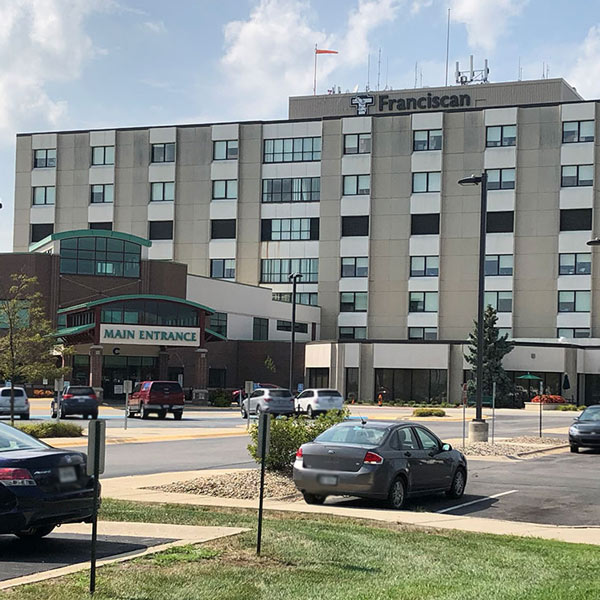Our Approach
At Franciscan Health, we closely monitor all stem cell transplant recipients throughout their treatment and follow-up for any potential signs of graft versus host disease (GvHD). Your transplant doctor will ask you about signs and symptoms of GvHD and treat this serious reaction promptly. We offer preventive therapies and medication treatment to help you thrive after a stem cell transplant.
How is graft vs. host disease (GvHD) treated?
Treatment for graft vs. host disease varies depending on whether the condition is acute or chronic.
Acute GvHD treatment
Milder forms of acute graft vs. host disease (Grade I) often need no specific therapy. Your doctor may prescribe a skin cream to decrease inflammation.
For acute GvHD of Grade II or worse, the first line of therapy is steroid medication to reduce inflammation. You may receive steroids intravenously until the condition stabilizes. Then you may switch to an oral steroid.
If steroids don't resolve GvHD, your doctor can try other medications. Learn more about acute GvHD diagnosis and treatment.
Chronic GvHD treatment
Chronic graft vs. host disease treatment can be complicated. The condition can cause internal inflammation and stiffened joints and skin. Your doctor will develop a personalized plan to treat chronic GvHD that includes:
- Physical therapy
- Adequate exercise
- Drug (medication) therapy
- Good personal hygiene
What is GvHD?
Graft versus Host Disease, often abbreviated as GvHD, is in short when your body rejects donor stem cells. When you receive stem cells donated from other people (the graft), your body (the host) knows the difference and sometimes wants to fight against the donor cells.
Immune systems attack and destroy "foreign" (not from your body) proteins, whether they are bacteria, viruses, cancer cells or transplanted tissues. In the case of GvHD, one type of cells — in this case, the donor cells - tries to destroy the other.
Specifically, white cells (lymphocytes) from the stem cell graft target certain body tissues. The cells damage your tissues through direct contact or by producing proteins called lymphokines.
GvHD targets the skin, bowel (intestines) and liver. Acute GvHD can be very dangerous. It is the single most important transplant-related cause of death following an allogeneic stem cell transplant.
Types of GvHD
Graft versus host disease may be acute or chronic:
- Acute graft versus host disease occurs within the first 100 days after transplant. It most often arises 25 to 60 days after stem cell infusion.
- Chronic graft versus host disease occurs beyond day 100 after transplant. It can develop up to several years after transplant.
Acute graft versus host disease can lead to chronic GvHD, but you can develop chronic graft vs. host disease without having acute GvHD.
Doctors grade acute GvHD based on its severity and what parts of the body it affects. The classification system ranges from Grade I (mildest) to Grade IV (severe), or Grade A (mildest) through Grade D (severe).
What causes GvHD?
Graft vs. host disease may occur after you receive a stem cell transplant to treat a condition such as leukemia, myeloma or an immune condition. GvHD arises when healthy donor stem cells recognize your body's tissues as foreign and attack them.
Symptoms of GvHD
Symptoms of graft versus host disease include:
- Skin rashes or hardening
- Diarrhea and abdominal cramps
- Jaundice
- Abnormal liver function tests
- Difficulty swallowing
- Dry mouth and/or dry eyes (sicca syndrome)







